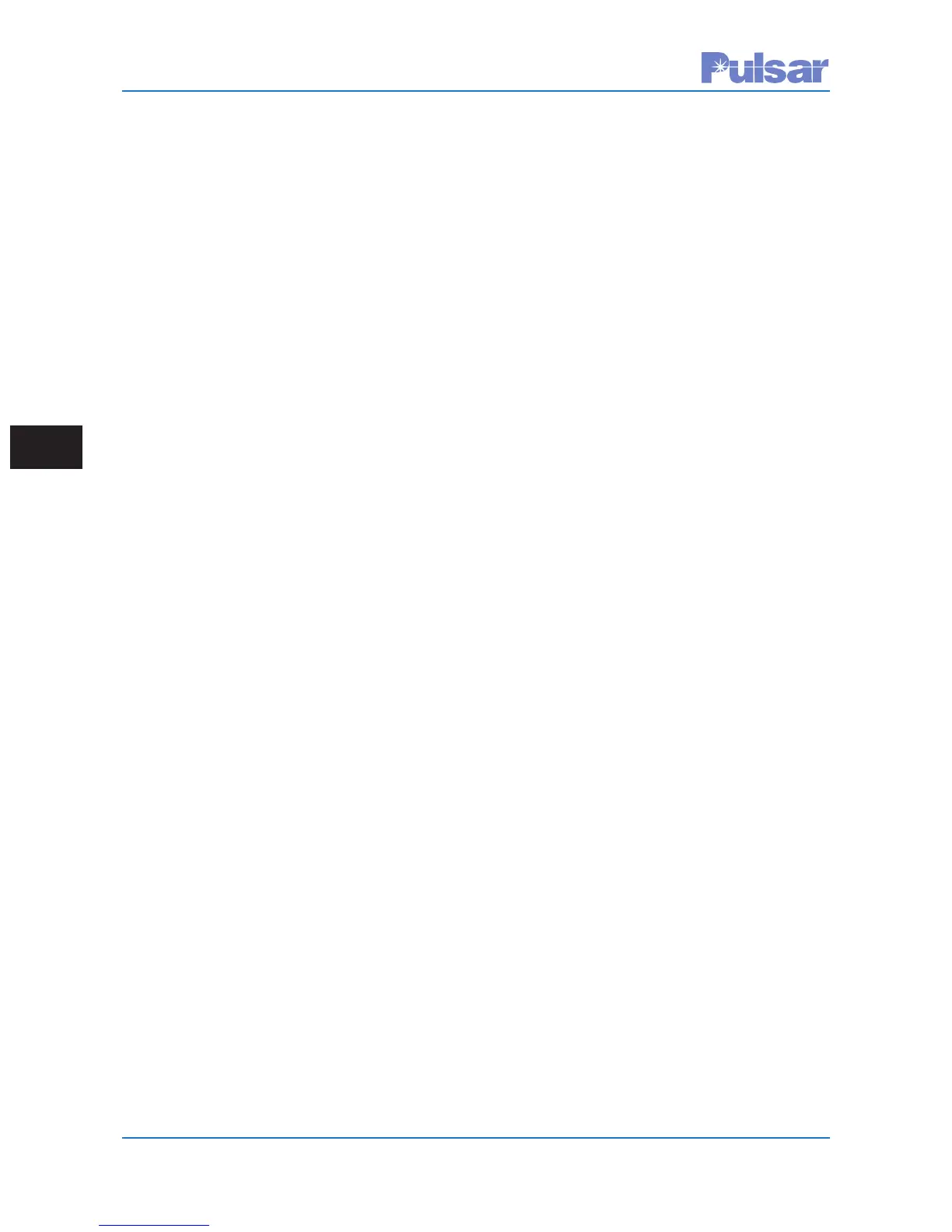Page 6–2
UPLC-II™ System Manual
A normal checkback test consists of one unit
a
ddressed as the master sending a test to 1 or more
units addressed as remotes and those units
responding back to the master. To accomplish this,
a unique time period carrier ON pulse or multiple
pulses are sent which the other units recognize as
a test. These pulses are sent in the same way as
when a blocking carrier signal is sent but it is their
precise time period and/or pulse pattern that iden-
tifies them as a test. All checkback testing is
immediately shut down if there is a carrier start or
stop input to the UPLC-II™ coming from a pro-
tective relay due to the way the UPLC-II™ keying
logic is designed.
6.2 Checkback (CB) Settings
6.2.1 General Information
The general rule for Checkback settings is to set
all units in a system with the same settings except
each unit will have a different module address
(master, remote # 1, remote #2, etc.). This should
be followed for optimum results. Which unit is
master or remote is really not critical, except that
it is recommended to make the UPLC-II™ the
master with mixed systems that have other non-
UPLC™ units. Also if IRIG-B is only being used
at one UPLC™ for time stamping, then make that
location the master and the other non-IRIG-B
units can be synchronized to it if desired.
6.2.2 Primary Communications Mode
The primary communication mode of the check-
back relates to the speed and capability of the
checkback test.
In the coded mode the test operates at approxi-
mately 60 bits per second with the carrier being
pulsed on and off as fast as 1/60th of a second
depending on the data stream. This has been found
to be a very reliable communication speed.
In the timed mode, however, it operates much
slower with the carrier being pulsed on for a 5, 10,
or 15 sec time period depending on whether the
master, remote #1 or remote #2 are being talked to,
respectively. The timed mode is very reliable and
in general this extra reliability is not needed. We
only recommend setting the "Primary
Communication" to the timed mode for systems
t
hat are very noisy or where blocking output SOEs
filling a protective relay’s buffer is an issue.
The recommended setting is to use the ""Primary
Communication" set to "Coded" and the "Fallback
Timed Mode" set to "Enabled" so if the coded
mode fails to have a successful test it first tries a
timed mode test before giving any alarms.
Even with the "Primary Communication" set to
the timed mode, the checkback will still be operat-
ing in coded mode for sending commands (i.e. get-
ting settings, checking events, etc.) other than
doing the actual checkback tests, because if these
commands were sent in the timed mode it would
take several hours to process a command. Also
two features are not available in the timed mode
due to the reduction in data that can be sent. First,
you do not get a successful checkback test output
at the opposite end of where you initiated the test,
only at the local end. And secondly the remote
checkback only responds with high level tests
regardless of whether high level or low level tests
were sent to it.
6.2.3 Checkback Test Sequence
The normal sequence of events for a successful
checkback test is that the master end sends out
coded signal pulses from the local Transmitter to
the remote end Receiver first. At the remote end,
the signal is received by its Receiver and the
checkback software tells the Transmitter to
respond with a different set of coded signal pulses.
The local Receiver at the master end then receives
this checkback signal and indicates a successful
test at the master end. If set in the "coded" primary
communication mode, it then sends an acknowl-
edgement to the remote end and the remote end
indicates a successful test also. If you have a 3-ter-
minal line and initiate a test at the Master, then the
Master will communicate to Remote #1 and then
to Remote #2. If you initiate a test at either
Remote, then the Remote will first communicate
to the Master and then to the other Remote.
With an unsuccessful test, the master end will send
the initial test, then "X" number of retry tests, then
(if "fallback to timed mode" is enabled) run a
much slower pulse "timed" mode test before final-
